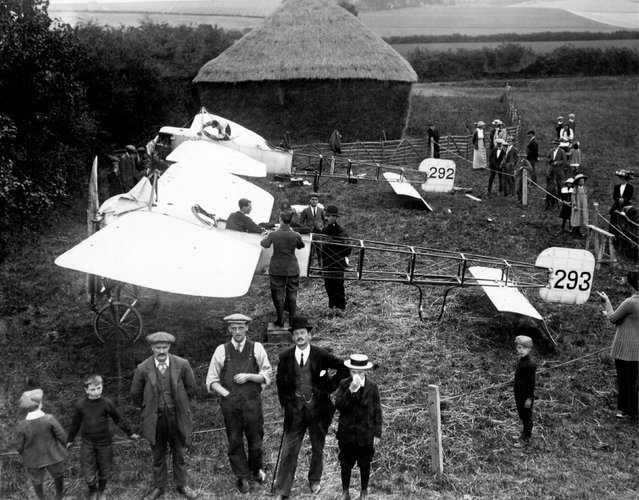
Curious onlookers watching as mechanics work on two Bleriot XI aircraft at Wantage, UK, 1913. (Photo by Air Historical Branch/RAF/PA Wire)
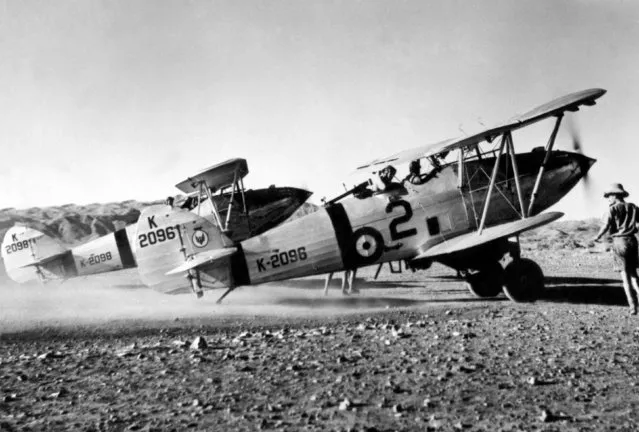
In this photo issued Sunday April 1, 2018, by Britain's Ministry of Defence showing two Hawker Hart light bombers of 39 Squadron at Miranshah on the North West Frontier, Pakistan in 1938, as part of a collection of images marking the centenary of the world's first independent air force. It was 100-years ago on April 1 1918 that the Royal Flying Corps and the Royal Naval Air Service merged to created the Royal Air Force. Queen Elizabeth II sent congratulations to the Royal Air Force on the 100th anniversary of its founding, with her message read out by 16-year old Adam Wood, one of the youngest members of the RAF. (Photo by Air Historical Branch/RAF via AP Photo)
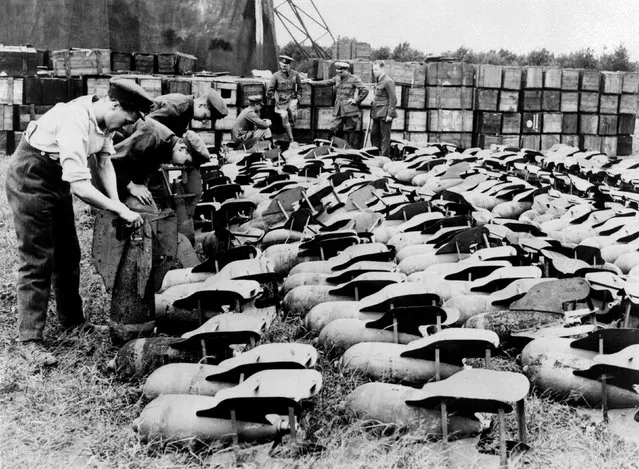
Armourers prepare the full complement of 112lb bombs needed for night bombing operations by the FE2bs of 149 Squadron at Saint-Omer, France, 1918. (Photo by Air Historical Branch/RAF/PA Wire)
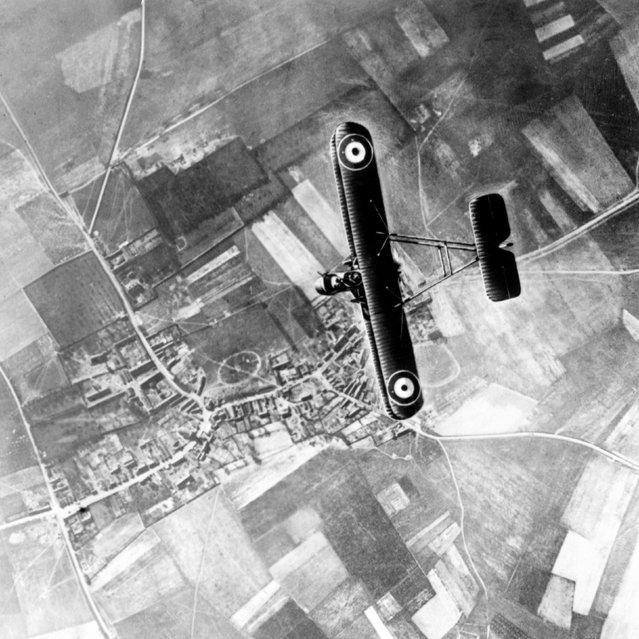
An FE2b two-seat fighter above the trenches on the Western Front during the first world war, circa 1914-18. (Photo by Air Historical Branch/RAF/PA Wire)
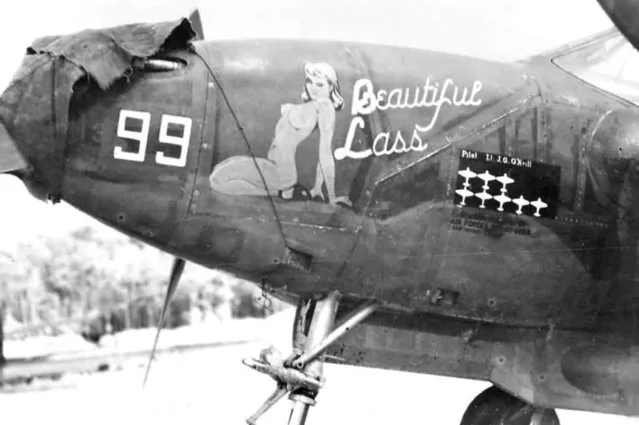
This 1943 photo provided by U.S. Army Air Forces shows John O’Neill's P-38 Lightning fighter at a U.S. airfield near the town of Dobodura in Papua New Guinea. His son Jon O’Neill flew 23 hours from Florida to the mountainous jungles of Papua New Guinea in the South Pacific in search of clues to the life of his war hero father whom he can barely remember. At times it has been a painful journey of discovery among the rusted relics entangled in undergrowth of a conflict that ended for his father, U.S. Army Air Forces 9th Fighter Squadron of the 49th Fighter Group ace John G. “Jump” O’Neill, 75 years ago. (Photo by U.S. Army Air Forces via AP Photo)
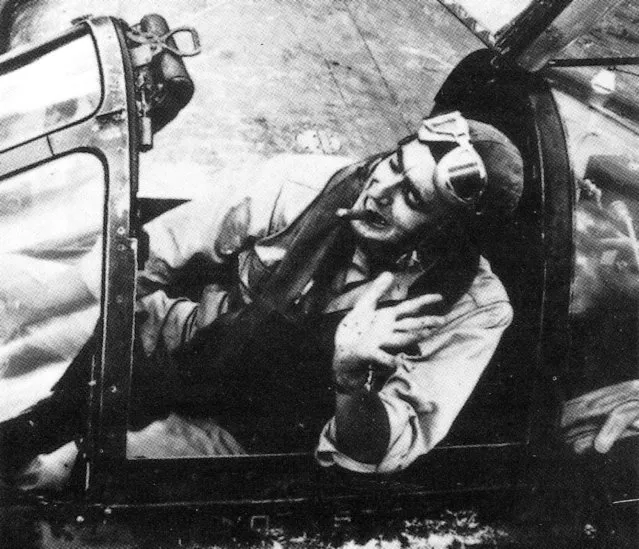
In this 1943 photo provided by U.S. Army Air Forces, John O’Neill waves from his P-38 Lightning fighter at a U.S. airfield near the town of Dobodura in Papua New Guinea. (Photo by U.S. Army Air Forces via AP Photo)
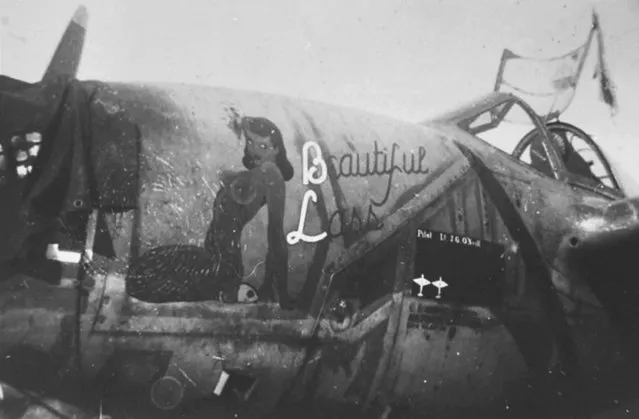
This 1943 photo provided by U.S. Army Air Forces shows John O’Neill's P-38 Lightning fighter, called called Beautiful Lass, at a U.S. airfield near the town of Dobodura in Papua New Guinea. (Photo by U.S. Army Air Forces via AP Photo)
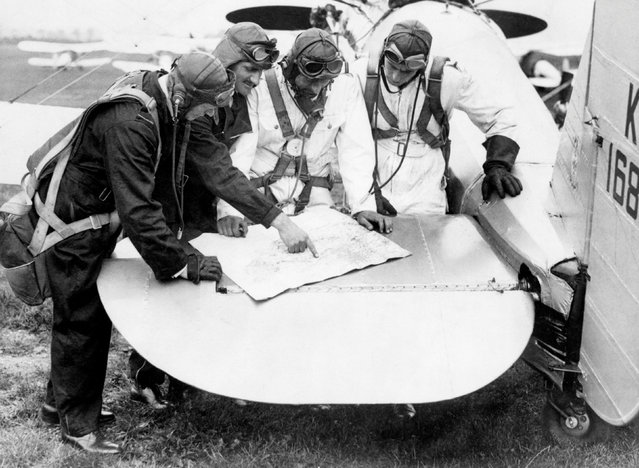
Pilots of 111 Squadron use the tail plane of a Bristol Bulldog fighter to plot their route on a map, UK, 1935. (Photo by Air Historical Branch/RAF/PA Wire)
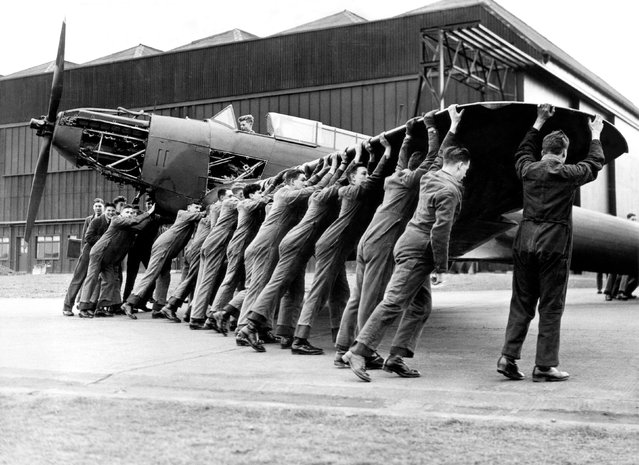
Trainees push a Fairey Battle to a hangar at 2 School of Technical Training at Cosford, Shropshire, 1940. (Photo by Air Historical Branch/RAF/PA Wire)
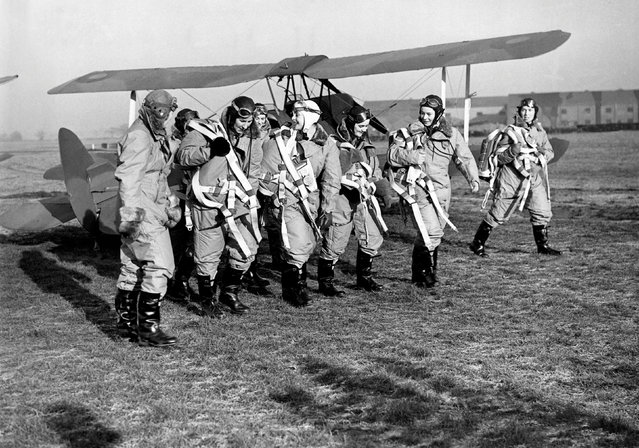
A group of Air Transport Auxiliary pilots in their flying kit at Hatfield, Hertfordshire, UK, 1940. (Photo by Air Historical Branch/RAF/PA Wire)
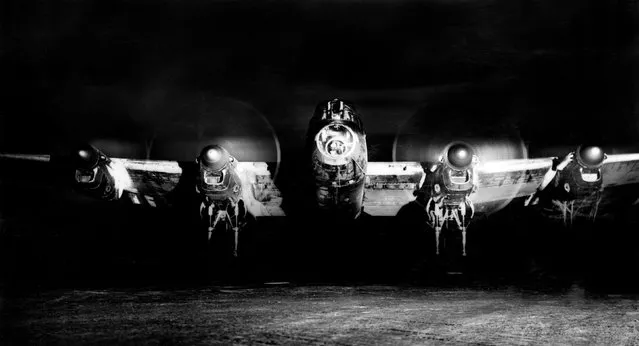
An Avro Lancaster BI (R5729/KM-A), of 44 Squadron, running up its engines in a dispersal at Dunholme Lodge, Lincolnshire, before setting out on a night raid to Berlin, 1944. (Photo by Air Historical Branch/RAF/PA Wire)
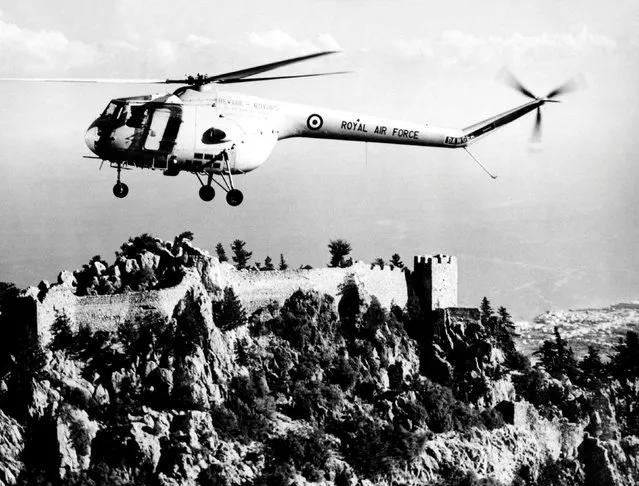
A Sycamore helicopter of 103 Squadron based at Nicosia, Cyprus, flying over St Hilarian Castle near Kyrenia, on the north of the island, 1961. (Photo by Air Historical Branch/RAF/PA Wire)
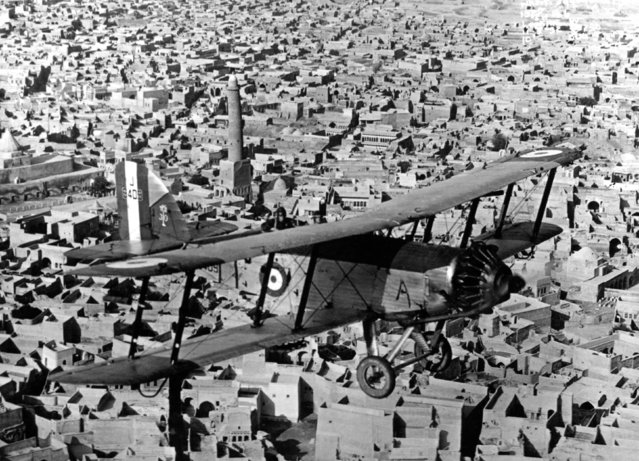
In this photo issued Sunday April 1, 2018, by Britain's Ministry of Defence photo dated March 11, 1932 of an RAF Westland Wapiti IIa of 30 Squadron in flight over the city of Mosul in Iraq, as part of a collection of images marking the centenary of the world's first independent air force. It was 100-years ago on April 1 1918 that the Royal Flying Corps and the Royal Naval Air Service merged to created the Royal Air Force. Queen Elizabeth II sent congratulations to the Royal Air Force on the 100th anniversary of its founding, with her message read out by 16-year old Adam Wood, one of the youngest members of the RAF. (Photo by Air Historical Branch/RAF via AP Photo)
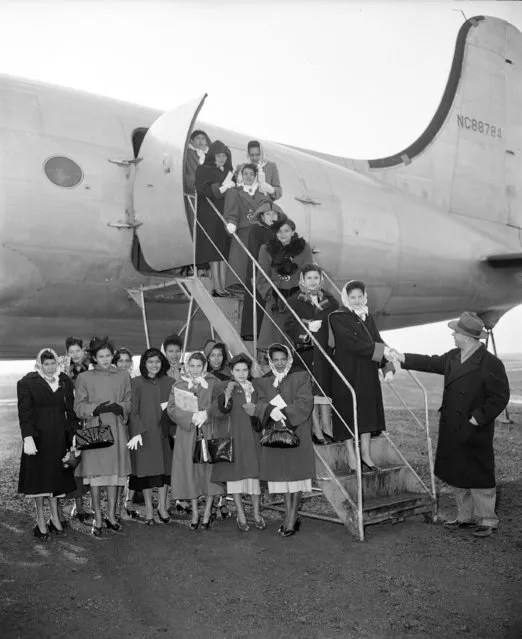
A group of Puerto Rican women, trained in household work by the Puerto Rican government, arrive at Newark Airport, February 27, 1953. They will be placed in homes in Scarsdale, N.Y. through the N.Y. State Employment Service. (Photo by AP Photo)
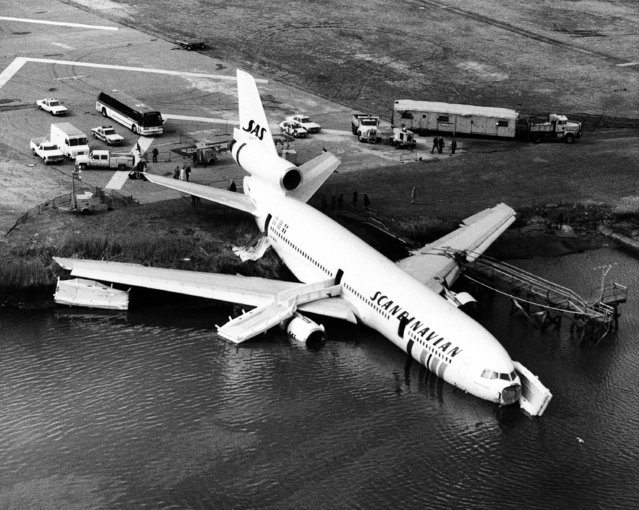
A Scandinavian Airlines jumbo jet lies in a 12 foot creek Wednesday after sliding off a wet runway at New York's John F. Kennedy Airport, USA on Tuesday February 28, 1984. The plane had flow in from Stockholm via Oslo and landed in drizzle and fog. 10 minor injuries were reported. (Photo by David Pickoff/AP Photo)
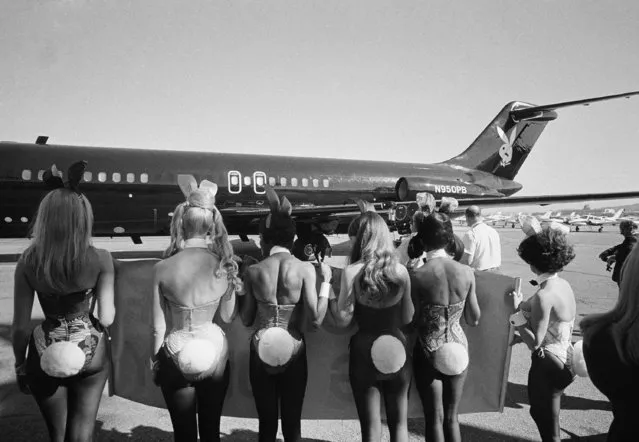
Playboy Bunnies welcome Hugh Hefner on the inaugural flight of his new DC-9 jetliner, The Big Bunny, March 17, 1970. The women are unidentified. (Photo by George Brich/AP Photo)
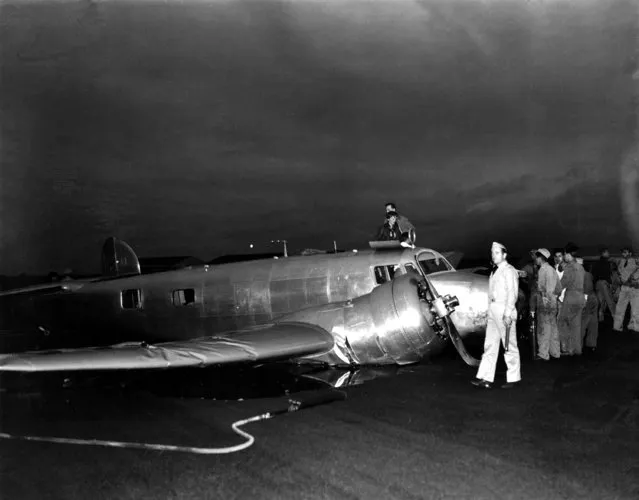
American aviatrix Amelia Earhart, navigator Frederick Noonan, standing behind her, and Capt. Harry Manning emerge from the Electra after it crashed on takeoff from Luke Field, near Pearl Harbor, Hawaii, March 20, 1937. Earhart and her crew were en route to Howard Island on their around-the-world flight. The smashed propeller and motor are visible in foreground. (Photo by AP Photo)
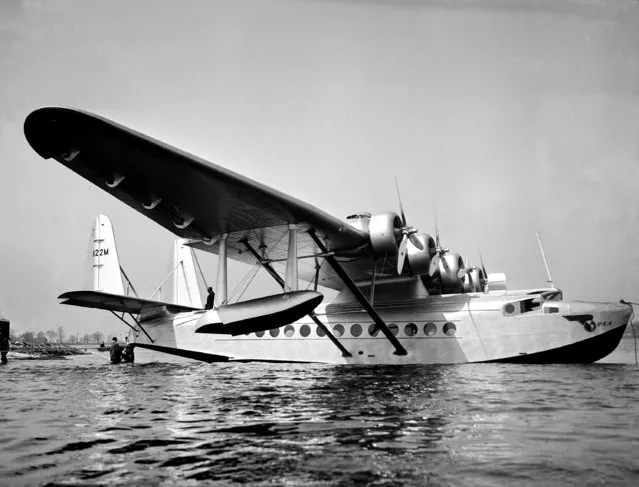
The Flying Clipper S-42, built by Sikorsky for Pan-American Airways, is shown as it rides the waters of Long Island Sound during tests near Bridgeport, Conn., March 30, 1934. The Clipper will be used on Pan American's South American service. The hull of the 38,000-pound plane is 76 feet long, and its wing span is 114 feet 2 inches. (Photo by AP Photo)
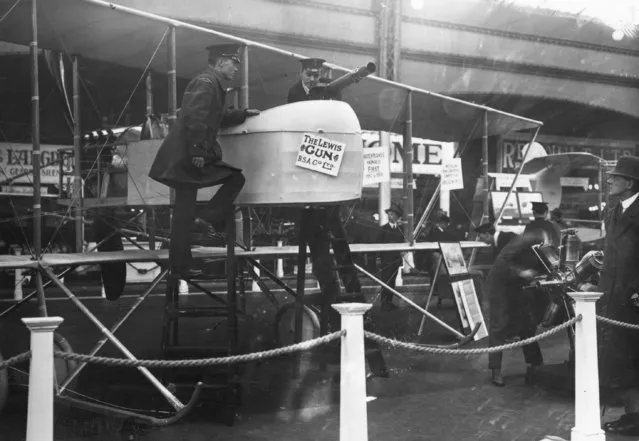
Members of the Royal Flying Corps studying the armaments of a Maurice Farman aeroplane March 21, 1914. (Photo by Hulton Archive/Getty Images)
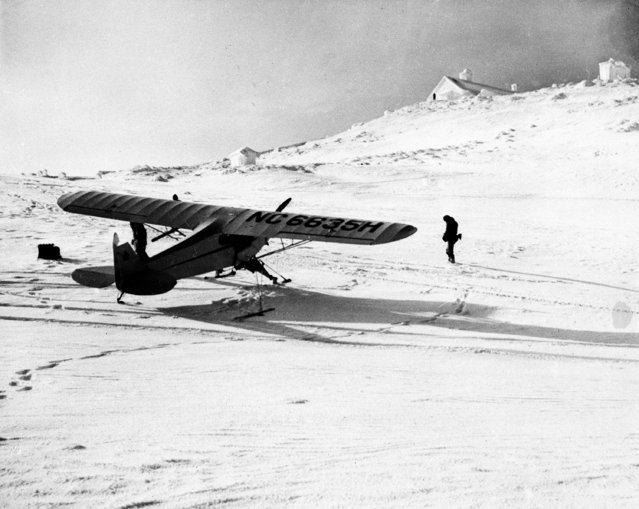
A Piper Cub is the first airplane to land on the summit of Mt. Washington, N.H., on March 22, 1947. The aircraft sits on a snowfield atop the 6,293-foot peak after flying from nearby Berlin, N.H., with special equipment and supplies for the weather observatory located on the mountain. At top right is the roof of one of the observatory buildings. (Photo by AP Photo)
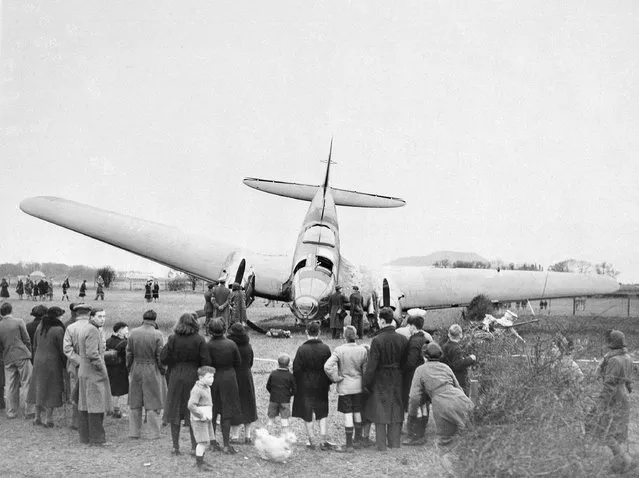
Crowds of curious English people are shown gathered around this German bomber, March 8, 1940, after it was shot down, somewhere in England, by an R.A.F., fighter. The Nazi plane crashed after narrowly missing some telegraph wires, ending up with its tail in the air. (Photo by AP Photo)
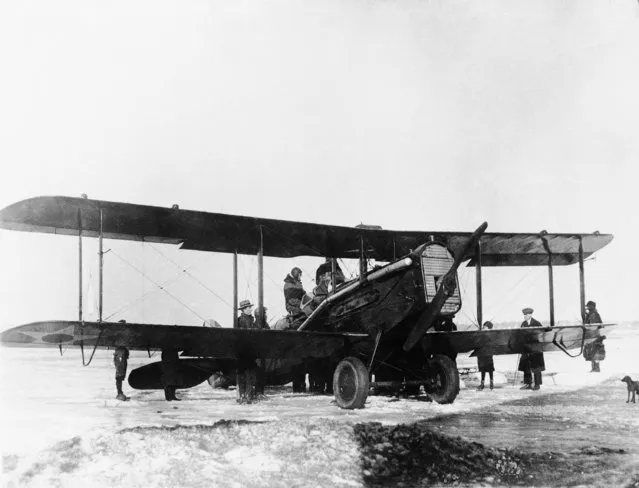
This U.S. Army regulation DH4-B3 plane, piloted by Lt. Lyman P. Whitten and Bradley Jones, flew from Dayton, Ohio, to Boston, Massachusetts in record time on March 1, 1926. The distance was 725 miles and the time was five hours and fifty minutes. It was a non-stop flight with purpose to test instruments in fog and flying above the clouds. (Photo by AP Photo)
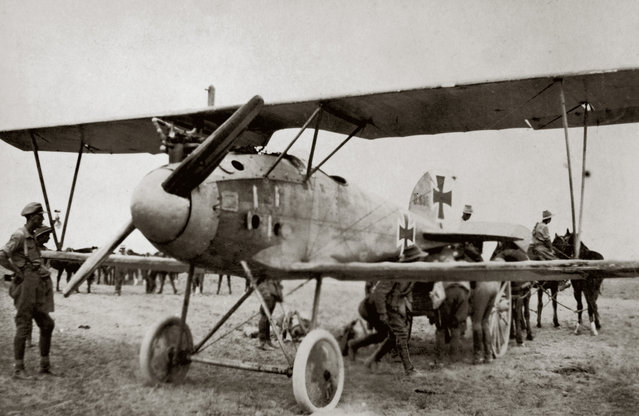
Australian troops with a captured German Albatross D.III fighter, Palestine, 7th March 1918. (Photo by Topical Press Agency/Hulton Archive/Getty Images)
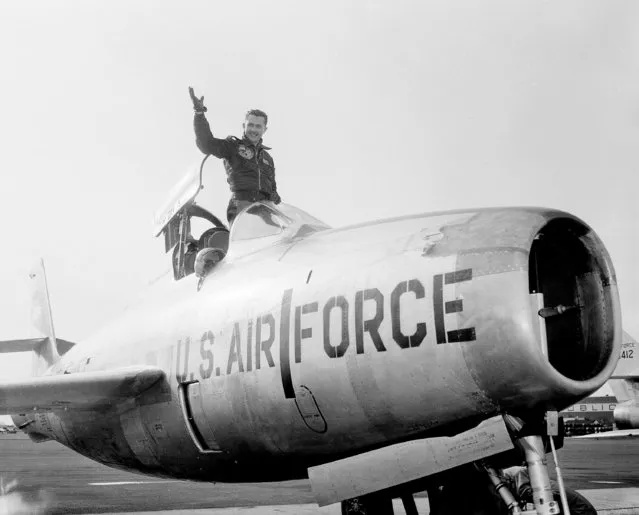
Lt. Col. Robert R. Scott, U.S. Air Force pilot from Des Moines, Ia., who broke air speed record from Los Angeles to New York, waves from the cockpit of F84F Thunderstreak he piloted on the flight after landing at Republic Aviation Corp., field at Farmingdale, Long Island, N.Y., March 9, 1955. Scott's jet made it from California to the finish line at Floyd Bennett Field, averaging 649 miles per hour, in 3 hours, 46 minutes and 33 seconds. (Photo by Anthony Camerano/AP Photo)
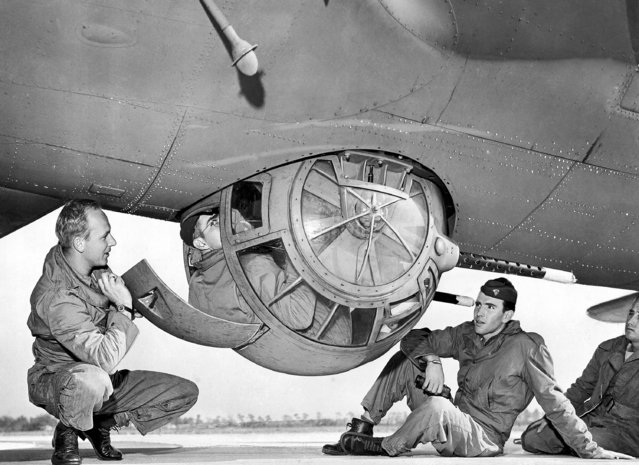
Private Harold L. Langhofer edges into the ball-turret, March 9, 1943. Curled in this position, he can turn the turret so that it fires in any direction. The turret can also be swung around so that the hatch opens into the plane, and the gunner can crawl into it while the Flying Fortress is in motion. (Photo by AP Photo)
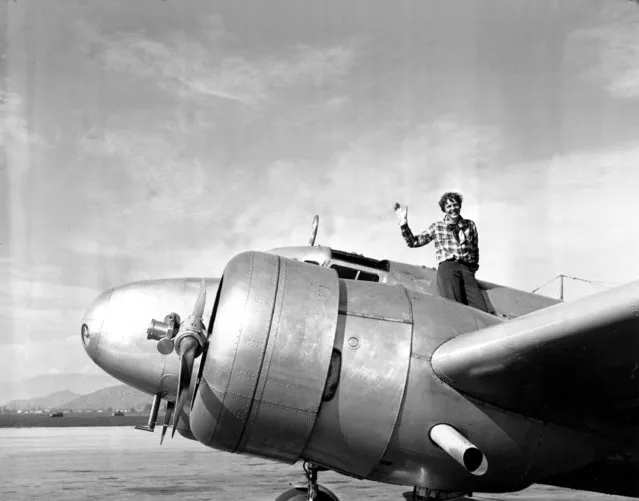
American aviatrix Amelia Earhart waves from the Electra before taking off from Los Angeles, Ca., on March 10, 1937. Earhart is flying to Oakland, Ca., where she and her crew will begin their round-the-world flight to Howland Island on March 18. (Photo by AP Photo)
05 Apr 2018 00:03:00,
post received
0 comments
